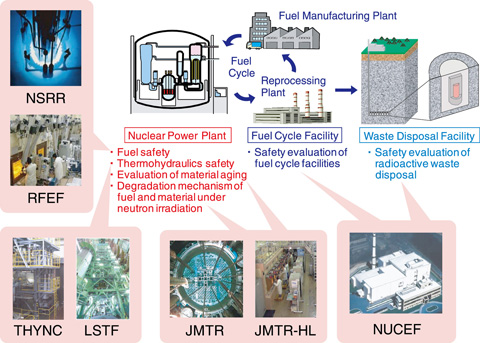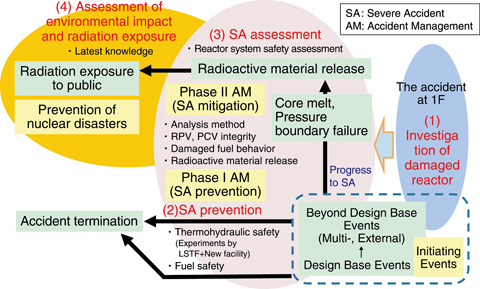
Fig.6-1 Nuclear safety research areas and related JAEA facilities

Fig.6-2 Future direction of nuclear safety research
The possibility of serious accidents in nuclear installations and their consequences have been studied at the Nuclear Safety Research Center (NSRC) in order to ensure the safe use of current nuclear facilities. A massive and severe accident occurred at the Tokyo Electric Power Company, Incorporated Fukushima Daiichi Nuclear Power Station (1F) as a result of the Great East Japan earthquake and tsunami. The NSRC has been collaborating with the Japanese government to institute appropriate emergency response procedures based on research findings and developments. Most specialists at the NSRC regret that they were unable to prevent the accident.
Continuous efforts should be made to avoid serious damage while we utilize nuclear energy. Because human technologies are not perfect, a proper understanding of the situation and continuous improvement of developed technologies are important for making the best and safest use of the technologies. The International Atomic Energy Agency, which investigated the accident at the 1F, pointed out the importance of “continuous improvement.” The different phenomena that could threaten nuclear safety have been studied at the NSRC using the various facilities shown in Fig.6-1. Radionuclides are handled and accident conditions are safely simulated at these special facilities.
In this chapter, the results of recent safety research on the following topics are presented: the fracture limit of fuel cladding and the integrity of reactor pressure vessels (Topics 6-1, 6-2) for reactor safety; confinement in the case of fire at reprocessing facilities (Topic 6-3) for nuclear fuel cycle facility safety; and corrosion of high-level waste storage tanks (Topic 6-4) for radioactive waste disposal safety.
We believe that continuous research on these technical subjects is indispensable for promoting the continuous improvement of nuclear technologies, including those for safety regulation and electric-power generation. As shown in Fig.6-2, to reduce the risk of nuclear facilities and enhance the preparedness for emergency conditions that are postulated to lead to a severe accident, we are planning to conduct nuclear safety research with a priority on advanced evaluation methods for accidents and external events so that severe accidents with significant impact occur even less frequently.
The following topics related to items (2)∼(4) indicated in Fig.6-2 have been described in Chapter 1:
(2) prediction of reactor core damage avoidance in the 1F2 Unit (Topic 1-20)
(3) data acquisition for the analysis of core melt progression (Topic 1-18)
(4) effect of protective measures taken after the accident (Topic 1-16)